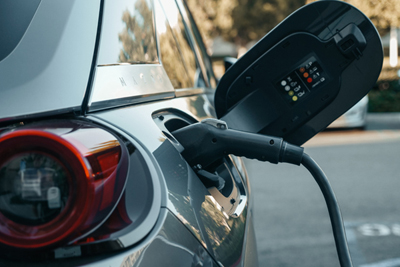San Diego Gas & Electric (SDG&E) and General Motors on Nov. 10 announced an agreement to investigate the feasibility of integrating bidirectional EVs into the electric grid as a local energy resource.
Following GM’s announcement of its newest business unit, GM Energy, the study will examine the hardware, software, processes and construction considerations necessary to accelerate wider adoption of Vehicle-to-Grid Integration (VGI) capabilities, which include:
- Documenting best practices for Vehicle-to-Home or Building projects so that the benefits may be clearly communicated to customers.
- Developing systems that help enable utilities and vehicle manufacturers to leverage cloud-based energy management platforms and distributed energy resources, such as EVs, to create a Virtual Power Plant. A Virtual Power Plant is a collection of energy resources that can be interconnected and operated together via cloud-based software.
- Exploring the integration of EVs in microgrid environments to increase grid resiliency for communities. A microgrid is a smaller power grid that uses technology like energy storage or EV batteries to provide power to specific communities or facilities in the event of an outage.
“Vehicle-to-Grid technology can help transform our energy system and provide tangible, positive benefits to our customers in Southern California,” said SDG&E CEO Caroline Winn. “EVs can help us improve community and grid resiliency in the face of climate change as we work with the state and partners to meet our shared climate goals.”
Under the new agreement, GM and SDG&E will study three VGI capabilities: Vehicle-to-Home (V2H), Vehicle-to-Grid (V2G), and a Virtual Power Plant, which can leverage distributed energy resources such as EVs, batteries and chargers to help the grid meet demand.
“Through GM Energy, working with companies like SDG&E will play an important role in accelerating new technology and energy management solutions to market for customers,” said GM Vice President of EV Growth Operations Travis Hester. “As GM continues on its journey towards an all-electric future, expanding the capabilities of EVs represents a significant opportunity to help strengthen grid resiliency and mitigate the impact of disruptions.”
SDG&E and GM are signatories to the U.S. Department of Energy’s Vehicle-to-Everything (V2X) memorandum of understanding (MOU). The agreement is designed to bring together resources from DOE National Labs, state and local governments, utilities and private entities to unlock the potential of bidirectional charging to increase energy security, community resilience, and economic growth while supporting the nation’s electric system.
“Bidirectional charging holds tremendous potential for increasing the country’s energy security and grid reliability in addition to supporting economic opportunities for communities throughout the nation,” said U.S. Department of Energy Office of Technology Transitions Commercialization Executive Rima Oueid. “We are excited to see yet another V2X initiative undertaken by our MOU partners to accelerate adoption of this innovative technology.”
On average, cars are parked 95% of their useful life, according to research from University of California Los Angeles professor Donald Shoup. Per data from Veloz, California is home to 1.2 million EVs, the largest concentration in the nation. Starting in 2035, all new cars and passenger trucks sold in California are required to be zero-emissions.
Source: SDG&E










